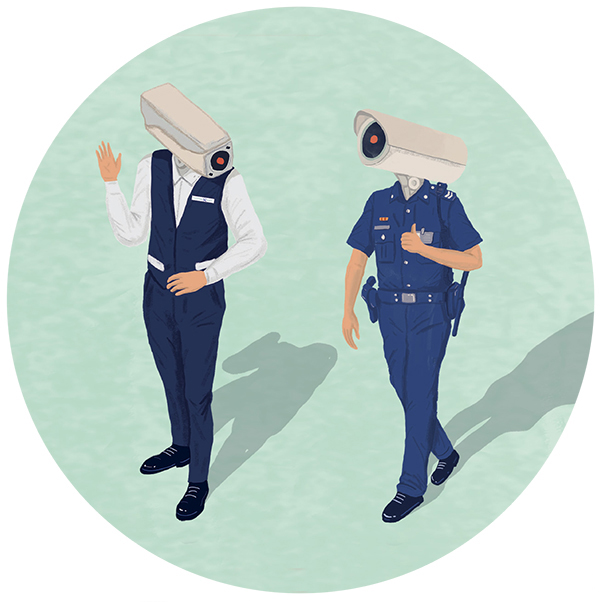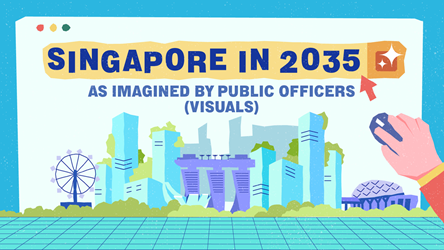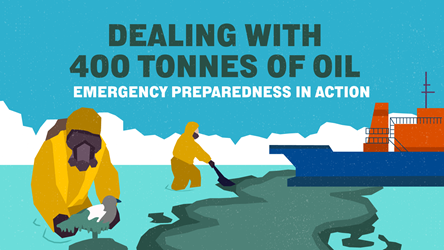Continuous Candid Camera: How Will The Ubiquity Of Cameras Affect Public Service?

It was an anomaly then in 1963, when millions watched on live television a man lunging forward to shoot, and fatally wound, Lee Harvey Oswald.
The cameras were only present because Oswald, who was being transferred from the Dallas police headquarters to a county jail, was the man believed to have assassinated US President John F Kennedy two days before.
But today, not only is live television taken for granted, with cameras in just about every mobile phone, TV stations are no longer the only entities that can broadcast to the world.
Everyone is a broadcaster
With YouTube, Twitter, Snapchat and Instagram all offering short video sharing, the man on the street now has his own media platform — and services like Facebook Live and Periscope empower him further, allowing his videos to be beamed live to the world.
There are countless examples of this, and some are grotesque. In November 2008, some 1,500 people logged on to watch a 19-year-old in Florida commit suicide in front of his webcam. Earlier this year in June, Antonio Perkins in Chicago was shot dead while broadcasting live on Facebook, as he took his friends around his neighbourhood. Screams rang out in the background as the phone fell to the ground.
But it is not all doom and gloom. A giggling Candace Payne brought smiles to faces as she tried on her newly purchased Chewbacca mask, which then flew off the shelves at Kohl’s department store.
Here in Singapore, a group’s public spiritedness was captured on camera and went viral on social media: In July 2015, South Korean Kim Sung Mo was pinned under a trailer truck following an accident, but escaped with only a leg fracture, thanks to a group of 30 lending their hands to lift the truck and pull him out. They later even received awards for their good deed.
The ability to broadcast videos has cast a spotlight on the spectrum of human behaviour, as the virtual world becomes a treasure trove of videos highlighting the good in people, as well as the bad, the silly, and even the ugly. It has also become a powerful tool for monitoring the actions of both ordinary citizens and people with power.

Eyes work both ways
With CCTV cameras that can now have tracking and facial recognition capabilities, video technology has empowered authorities and is helping governments to keep their countries secure, both in preventing local crime as well as in the fight against terror.
While surveillance appears to be par for the course in the 21st century, live streaming capabilities have also empowered the common man, who can now turn the eye back onto the watchers.
Sousveillance, or surveillance from below (the word “sous” means “below” in French), is a term coined by Steve Mann to describe the counter to government surveillance. The man on the street is now watching the authorities — policing from the ground up — and telling the world his side of the story.
Sousveillance happened in Egypt in 2011 when protestors took to the streets and demanded the overthrow of President Hosni Mubarak, who they felt had amassed too much power. They broadcast demonstrations live to the world, and got their story out before their phones were confiscated.
More recently, smartphone footage of police violence against African-Americans has spread online, leading to the Black Lives Matter movement in the US.
Protecting public officers

The Protection from Harassment Act came into effect in November 2014, providing for stiffer penalties against those who abuse public officers. But the Act will not be the government’s first option in cases involving public officers and members of the public.
During the Committee of Supply debate in April, Deputy Prime Minister Teo Chee Hean said: “We will do so only when the facts of the case justify this, and we will continue … to promote a culture of mutual courtesy and respect.”
DPM Teo said steps are being taken to help officers face the challenges in this new environment of online vigilantism.
“For example, officers with frontline responsibilities are trained to manage difficult situations,” he added.
“Our agencies have also established safe work environments that encourage positive interactions with the public, for example, by installing CCTVs at service counters, assist buttons for service staff, and for those on the move, body-worn cameras.”
Police officers have gone on duty with such cameras since February 2015. The National Environment Agency is also progressively equipping field officers with body-worn cameras to deter possible abusive behaviour.
In Singapore, sousveillance happens on a much smaller scale. A recent example involved a contracted Land Transport Authority (LTA) enforcement officer, whose brawl with an Uber driver was caught on camera, after the latter taunted him with vulgarities.
The LTA apologised for the incident on Facebook and announced the officer’s suspension. Both the LTA officer and the driver were charged with affray, but the driver faced greater penalties as he had verbally abused a public officer carrying out his duties (see sidebar).
The LTA’s Chief of the Quality Service Office Chandrasekar Palanisamy says public officers must always remind themselves that they joined the Public Service to make a difference for fellow citizens, including their family and friends. “Such an approach will help them to remain calm, even when being intimidated,” he says.
“Service delivery, carried out within established guidelines, will be able to withstand public scrutiny even when challenged in the public domain or social media,” he adds.
Another type of watching and policing of actions is also happening in Singapore, with online vigilantes not leaving punishment to the authorities, but publicly shaming those deemed to have crossed the line.
The case of Anton Casey was one such example. Not only did the online community flame the Briton for posting derogatory comments about the poor and public transport users on his Facebook page in 2014, it even revealed his personal details online, eventually causing Casey to lose his job and leave the country.
Citizens have also taken road issues into their own hands, setting up a web portal (Roads.sg) for members of the public to post videos from their dashboard cameras, so they can finger and flame errant drivers.
In the spotlight
Singapore’s smartphone penetration is the highest globally, according to Deloitte’s Global Technology, Media and Telecommunications survey in 2015. Nine out of ten respondents in Singapore have at least one smartphone. This raises the likelihood of events, including interactions with public officers, being recorded and posted online.
“Public officers face new challenges in an age of heightened digital scrutiny. On social media, minor incidents can be easily amplified,” said Ms Ow Foong Pheng, who chairs the Quality Service Committee under the PS21 movement.

“Actions might be taken out of context. This new environment may be daunting, especially for officers providing frontline services and those in the field.”
There have already been several examples of this, with the October 2015 incident involving Facebook user P J Wong, and Immigration & Checkpoints Authority (ICA) officer Eugene Ng perhaps best illustrating how context could be lost in online postings.
Titled “Know your rights”, Wong’s viral Facebook post complained about his treatment by Ng at the Changi Airport — Wong had not wanted to go through additional checks and he was stopped from doing a video recording. However, Wong later took down the post and apologised; the ICA also backed Ng to have acted within legal boundaries.
Ms Ow calls for public officers to continue to deliver services without fear.
“We should not be intimidated,” she points out. “We should continue to press on and deliver public services as we have always done, guided by a clear sense of purpose to serve the public and do what is right.”

Exploring opportunities
There is another side to that coin of greater scrutiny, with interesting options for the Public Service to consider. “The pervasiveness of digital technology also presents new opportunities for us to partner citizens to improve service delivery,” says Ms Ow.
The Singapore Police Force, she notes, is partnering drivers with in-vehicle cameras to serve as extra “eyes” to deter and solve vehicle-related crimes under its Vehicles on Watch initiative.
She adds: “I encourage other agencies to explore ways to partner citizens to achieve better societal outcomes.”
Dashboard camera recordings have already proven to be an added tool in solving crime. The police arrested a 63-year-old driver of a white Toyota Camry after multiple videos of his dangerous driving surfaced on Facebook and online forums. The videos identified the driver’s pattern of rash acts as well as the car’s license plate number.
Recordings of officer-citizen interactions could be useful too — to verify what happened in the case of any misunderstanding or even altercation, and also provide lessons that can help improve service.
Mr Phua Boon Leng, Director of the Customer Responsiveness Department and Quality Service Manager at the Ministry of Manpower, is optimistic that the combination of social media and videos can create good outcomes.
Besides social media enabling a more participative citizenry, posts on social media also alert public officers to service gaps that can be addressed in a timely manner, he says. Important information can also be conveyed directly and quickly.
And he adds: “Good service and deeds rendered to the public can quickly go viral [and] become inspiring and heart-warming stories.”
Programmes to support frontline officers
The Land Transport Authority (LTA) provides service delivery training and disengagement procedures, appoints service managers as well as employee surveys.
LTA staff can go for a customised course called the “Service Excellence Flagship Programme”, which engages participants in deeper conversations using real case studies on difficult customers or situations. Staff who require assistance on service-related issues, including managing difficult issues or customers, have appointed Deputy Quality Service Managers and Service Champions whom they can go to for guidance.
The LTA has a disengagement procedure that guides staff on disengaging from issues that are non-productive and seen to be consuming too many resources. It also conducts annual surveys to sense the areas in which staff need greater assistance and measures for improvement.
Meanwhile, the National Environment Agency provides foundational training to their field officers to ensure that they have the necessary technical, legal and engagement knowledge and skills. Field officers also go through Enforcement Field Tactical training to be sensitised to various challenging enforcement scenarios and pick up skills to handle such scenarios.
- POSTED ON
Sep 1, 2016
- TEXT BY
Lynda Hong
- ILLUSTRATION BY
Mushroomhead
-
Deep Dive
Strengthening Singapore’s Food Security
-
Trends
Trending February 2018









